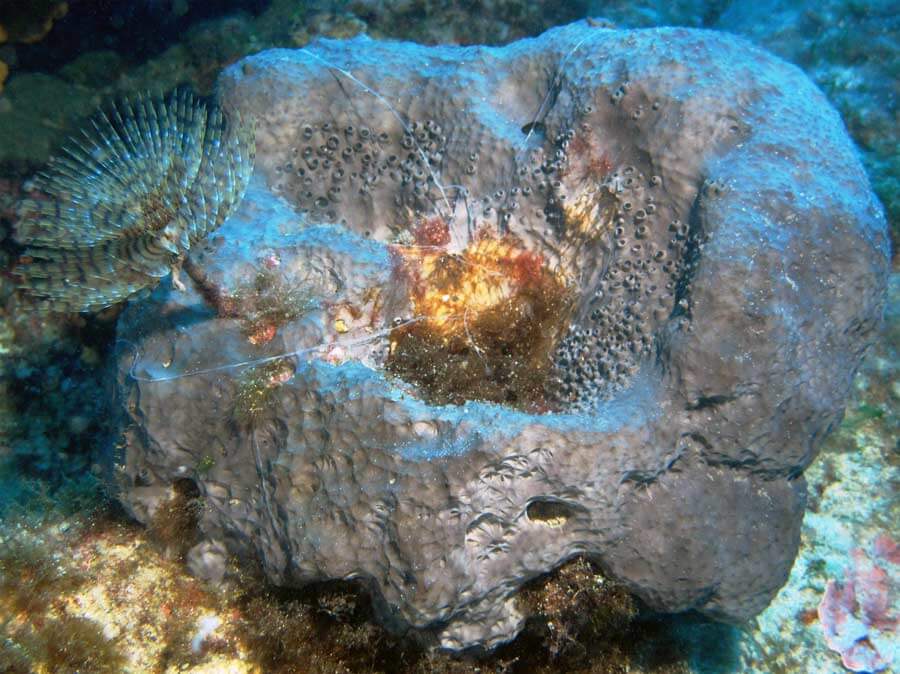Spongia officinalis, commonly known as the Bath Sponge, is a commercially used sea sponge. These sponges grow in large lobes with small openings and are formed by a mesh of primary and secondary fibers. They are light grey to black in color and feature fine, slightly elevated openings with cone-shaped voids (conules). Oscula can be scattered or at the tip of the lobes.

Spongia officinalis is found throughout the Mediterranean Sea, including the waters around the Maltese Islands. They inhabit shallow waters (1-10 meters) down to depths of 100 meters, growing on littoral rocky surfaces, sandy bottoms, and vertical walls in well-oxygenated water.

You can see Spongia officinalis while diving in various site around Goo in Malta. One notable dive site to observe these sponges is Ras il-Ħobż, also known as Middle Finger, on Gozo’s south coast. This site offers a perfect opportunity to explore the natural habitat of the Bath Sponge.
The photo of this Bath Sponge was taken at a depth of 30m at Ras il-Ħobż, also known as Middle Finger, on Gozo’s south coast.
